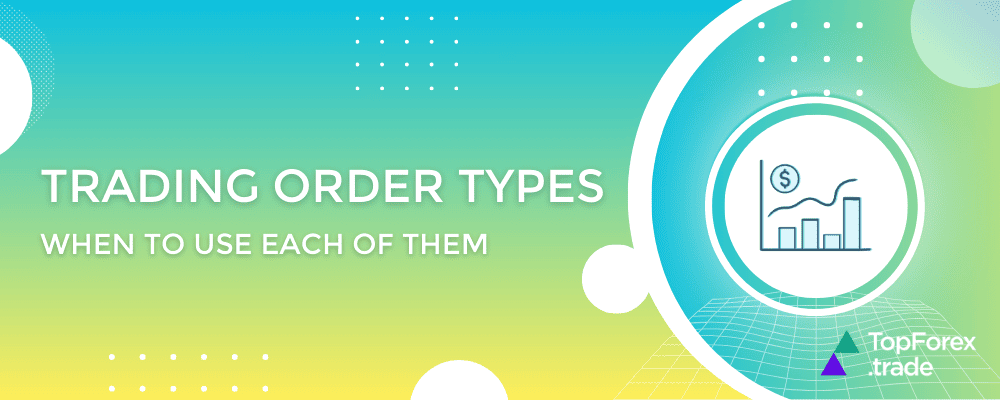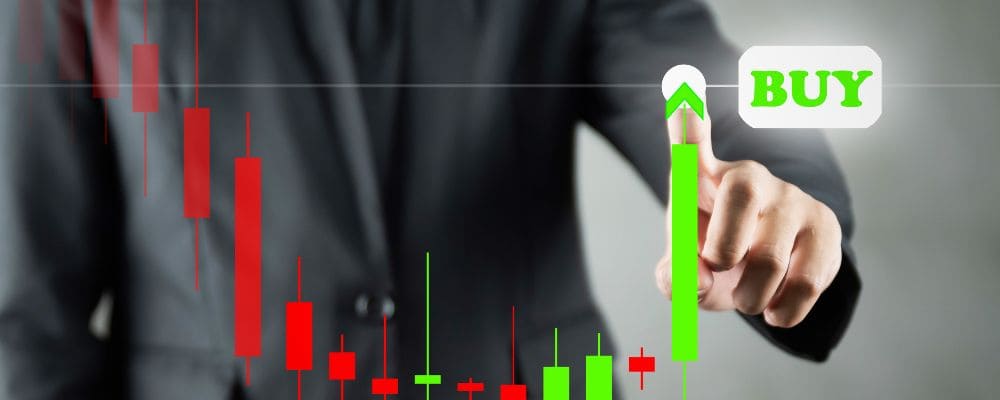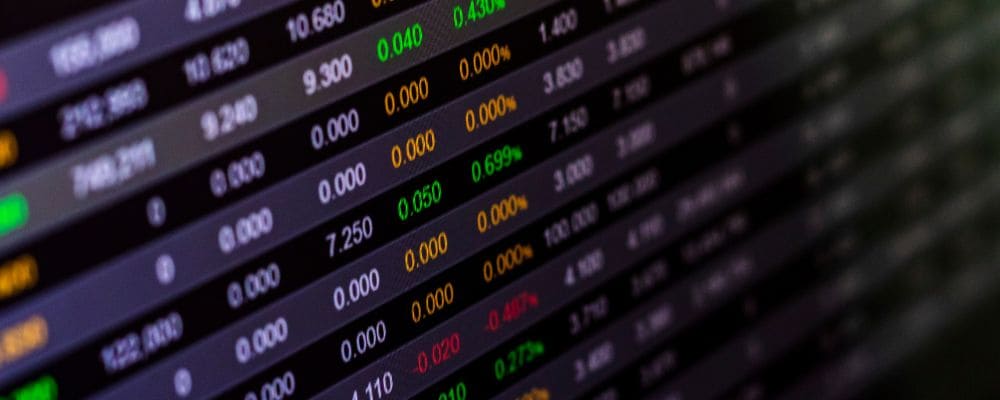Full guide on different Forex trading order types 2025

In trading, understanding the various types of orders is fundamental to executing strategies effectively and managing risk. Order types determine when and how a trade is placed, significantly impacting your overall success and profitability. For traders, particularly those involved in short-term trades and CFD trading, choosing the right order type is crucial because even small price changes can influence profits or losses.
Each order type has unique characteristics that suit specific trading objectives, such as capturing small price movements, setting precise entry and exit points, or protecting gains. A solid grasp of these options empowers traders to control their trades more effectively, adapt to fast-changing markets, and minimize risks—especially when dealing with high volatility.
Trading market orders explained

A market order is the simplest and most common type of order used in Forex and CFD trading. It is an instruction to buy or sell a currency pair immediately at the best available current price. When a trader places a market order, the trade is executed right away, making it an ideal choice when immediate entry or exit from a position is necessary.
— Pros:
- Instant execution: Market orders are processed immediately, allowing traders to capitalize on fast-moving markets.
- Simplicity: This type of order is straightforward, making it a good choice for new traders or those looking to enter or exit trades quickly without complex conditions.
— Cons:
- Potential for slippage: In highly volatile markets, the final execution price may differ from the expected price due to rapid price changes, resulting in slippage.
- Less price control: Since market orders are executed at the best available price, traders have less control over the exact price at which the trade is filled.
Market orders are commonly used when speed is a priority, such as in highly liquid markets or during news releases where price movements are sharp and immediate. This type of order suits day traders and scalpers who need quick entry and exit points to capture short-term price changes. However, it may not be ideal when precise entry or exit prices are critical, as is often the case with longer-term strategies.
Trading limit orders explained

A limit order is an instruction to buy or sell a currency pair at a specified price or better, offering more control over the entry and exit points of a trade. Unlike a market order, which executes immediately at the current price, a limit order remains pending until the market reaches the desired price level. Traders use limit orders to execute trades at preferred prices, allowing them to enter or exit positions on their terms.
Suppose a trader wants to buy EUR/USD, currently priced at 1.1000, but they believe the pair may dip to 1.0950 before rising. The trader can place a buy limit order at 1.0950, ensuring that the trade will only be executed if the price drops to this level. This allows them to enter at a lower price, potentially enhancing profitability if the price moves up after their order is filled.
— Pros:
- Price control: Limit orders enable traders to set specific prices, ensuring trades are executed only at the chosen level or better, which is valuable in volatile markets.
- Reduced slippage: Since the trade will only execute at the designated price, traders avoid the slippage risk associated with market orders.
- Better entry and exit points: By setting precise price levels, limit orders can help traders capitalize on anticipated price movements, optimizing potential returns.
Limit orders are particularly useful for traders who want to buy at a lower price or sell at a higher one without actively monitoring the markets. This type of order is ideal for swing traders or position traders who seek specific entry and exit points based on technical analysis.
Trading stop orders explained

A stop order is an instruction to buy or sell a currency pair once the market reaches a specified price, known as the “stop price.” Unlike limit orders, which execute at a set price or better, stop orders trigger a trade when the price hits a certain level, helping traders capitalize on momentum or prevent potential losses.
There are two main types of stop orders:
- Buy stop order: An order to buy a currency pair at a price above the current market price, triggering when the price reaches or exceeds the specified level.
- Sell stop order: An order to sell a currency pair at a price below the current market price, triggering when the price drops to or below the specified level.
Consider a trader monitoring EUR/USD, currently trading at 1.1000. They anticipate that if the price breaks above 1.1050, it could signal the start of a strong upward trend. To capture this move, the trader places a buy stop order at 1.1050. When the price reaches 1.1050, the buy stop order is triggered, entering the trader into a long position to capitalize on the breakout.
Similarly, if a trader believes that EUR/USD will decline if it falls below 1.0950, they can place a sell stop order at that level. If the price drops to 1.0950, the sell stop order triggers, allowing the trader to benefit from the downward movement.
— Benefits:
- Strategic entry: Stop orders are valuable in breakout strategies, as they allow traders to enter the market in the direction of momentum only when certain price levels are reached.
- Minimizes emotional trading: With stop orders, traders set predefined price points, reducing the impulse to react emotionally to short-term market fluctuations.
- Risk management: Stop orders can also work defensively to enter trades in anticipation of market movement, helping traders capture potential gains when markets are trending.
Stop orders are frequently used by breakout and trend-following traders looking to enter positions in the direction of price momentum while minimizing the need for constant market monitoring.
Trading stop-loss orders explained

A stop-loss order is a key risk management tool used to limit potential losses on a trade. It is an instruction to automatically sell (or buy back) a position if the market price moves against the trade to a predetermined level. By setting a stop-loss, traders protect their positions from excessive losses, ensuring that no single trade has an outsized impact on their account.
When placing a stop-loss order, the trader specifies a price level at which they are willing to exit if the trade turns unprofitable. Once the price reaches this level, the stop-loss order is triggered and the position is closed, preventing further losses beyond the set threshold.
Consider a CFD trader who buys EUR/USD at 1.1000, aiming for a potential upward move. They set a stop-loss order at 1.0950, meaning that if the price falls to 1.0950, the position will automatically close, limiting their loss to 50 pips. This gives the trader peace of mind, knowing that their risk is controlled.
— Importance of risk management:
- Loss limitation: A stop-loss order is essential in protecting capital, as it prevents traders from holding onto losing positions indefinitely. By setting clear boundaries, traders limit their potential losses to a manageable level.
- Emotion control: The stop-loss feature automates the exit from losing trades, helping traders avoid emotional decisions that can lead to greater losses.
- Position sizing and capital protection: Particularly for CFD traders, who often operate with leverage, a stop-loss order is crucial in preventing significant losses that could otherwise exceed the initial investment. It allows traders to predefine their risk on each trade, helping them maintain a healthy account balance even when trades don’t go as planned.
Stop-loss orders are invaluable for any trader but especially for those in leveraged trading, such as CFD traders, where market moves are amplified. By using stop-loss orders consistently, traders can protect their investments, avoid devastating losses, and trade with greater confidence in their risk management plan.
Trading take-profit orders explained

A take-profit order is a type of order used to lock in gains by closing a position once the market reaches a specified profit level. Unlike stop-loss orders, which aim to limit losses, take-profit orders are designed to secure profits by automatically closing the trade when it hits a predetermined price. By setting a take-profit order, traders can secure their gains without the need for constant monitoring of the market.
When placing a take-profit order, the trader specifies a price level at which they would like to exit the trade if the market reaches that point. Once the price hits the take-profit level, the order is executed, and the position is closed, ensuring that the profit target is achieved. Take-profit orders are often paired with stop-loss orders, allowing traders to define both their potential risk and reward on a trade.
Imagine a scalper who buys GBP/USD at 1.2500, aiming for a quick 20-pip profit. They set a take-profit order at 1.2520. If the price rises to 1.2520, the take-profit order executes, closing the position automatically and securing the 20-pip gain.
— Pros:
- Locks in profits automatically: Take-profit orders allow traders to secure gains without having to actively monitor the trade, making it ideal for fast-moving markets.
- Disciplined profit-taking: By setting clear exit points, traders avoid the temptation to stay in winning trades too long, which can lead to missed profit opportunities if the market reverses.
- Ideal for short-term trading: Take-profit orders are particularly useful for day traders and scalpers, who aim to capture small price movements and often have specific profit targets for each trade.
Take-profit orders are a go-to tool for day traders and scalpers who rely on quick, defined exits to capitalize on small price fluctuations. By using take-profit orders, these traders can efficiently capture gains, stick to their strategy, and prevent profitable trades from turning into losses if the market shifts direction.
Trading trailing stop orders explained

A trailing stop order is a type of stop-loss order that automatically adjusts itself as the market price moves in a favorable direction. Unlike a fixed stop-loss, which remains at a set price level, a trailing stop “trails” the market by a certain distance (in points or percentages) as the price moves favorably. This allows traders to lock in profits while still leaving room for potential gains as long as the trend continues.
A trailing stop order is initially set at a specified distance below (for buy orders) or above (for sell orders) the entry price. If the market moves favorably, the trailing stop automatically moves with it, maintaining the set distance. If the market reverses by the trailing stop distance, the order is triggered, and the position closes, protecting the accumulated profit.
Consider a trader who buys USD/JPY at 145.00, with a trailing stop set 50 pips below the entry price. If USD/JPY rises to 145.50, the trailing stop adjusts to 145.00, securing a break-even level. If the price continues to rise to 146.00, the trailing stop follows to 145.50. Should the market reverse from this point, the position closes at 145.50, locking in a 50-pip gain.
— Benefits:
- Locks in profits while following trends: Trailing stops allow traders to stay in winning trades longer, capturing gains while adjusting automatically to changing price levels.
- Flexible and dynamic: As the market moves, so does the stop level, giving the trade space to grow while still securing profit in case of reversals.
- Ideal for trending markets: Trailing stops are particularly useful in trending markets, as they enable traders to ride the trend without the need to manually adjust stop-loss levels.
Trailing stops are invaluable for trend-following strategies, as they help maximize profits without constant adjustments. By using trailing stops, traders can remain in profitable trades longer, capturing the full benefit of strong market trends while ensuring they don’t give up gains if the trend reverses.
Choosing the right FX broker for order placement

Understanding and effectively utilizing different order types is crucial for successful forex trading, and the right broker can make a significant difference in how well you execute your strategies. Whether you’re using market orders for immediate execution, limit orders for precise entries, or stop orders to protect against losses, the broker’s trading platform plays a key role in facilitating smooth order placement.
eToro trading orders
eToro is a popular broker known for its easy-to-use platform and strong Social trading features. One of the key advantages of trading with eToro is its intuitive order placement system, which makes it simple to execute various order types, including market, limit, and stop orders. The platform provides real-time market data and advanced charting tools, allowing you to identify the right points to place your orders with precision.
For traders looking to trade based on Social signals or trends, eToro’s social trading network also lets you mirror the trades of successful investors, helping you understand how they place orders and manage risk. With these features, eToro is an excellent choice for beginners and experienced traders who need a straightforward yet versatile platform for order placement.
BlackBull Markets trading orders
BlackBull Markets is renowned for its competitive spreads and robust trading environment, particularly for professional and institutional traders. Offering MetaTrader 4 (MT4) and MetaTrader 5 (MT5) platforms, BlackBull Markets gives traders a powerful suite of tools for placing orders. These platforms support a variety of order types, including trailing stop orders, which are perfect for capturing profits in dynamic markets. The ability to place and automate complex strategies while using advanced charting tools allows traders to pinpoint entry and exit points with greater precision.
Additionally, BlackBull’s low-latency execution speeds ensure that orders, particularly limit and stop orders, are filled at the desired price levels quickly and efficiently—critical for minimizing slippage and maximizing trading opportunities.
XTB trading orders
XTB offers the xStation 5 trading platform, which is packed with advanced features designed to help traders place orders effectively. This platform provides real-time data and a user-friendly interface, making it easy to place market, limit, stop, and trailing stop orders. The advanced charting tools within xStation 5 allow you to visually plot important price levels, helping you set up precise entry points and risk management orders. With one-click trading and fast execution times, XTB makes it easy to react swiftly to changing market conditions. For active traders, particularly those focused on short-term trading, the platform’s flexibility and advanced order placement tools ensure that you can act quickly and accurately.
Exness trading orders
Exness stands out for its fast execution speeds and reliable trading infrastructure, supporting both MetaTrader 4 (MT4) and MetaTrader 5 (MT5) platforms. These platforms offer a full range of order placement options, including market orders, limit orders, stop orders, and trailing stops. Exness’s powerful trading terminals also provide comprehensive risk management tools, which enable traders to set up orders with high precision. Exness offers low spreads and high liquidity, making it particularly attractive for traders who rely on tight execution for their order placements. Whether you’re trading short-term or using longer-term strategies, Exness’s seamless order execution ensures that your trades are filled as expected.
Each of these brokers—eToro, BlackBull Markets, XTB, and Exness—offers robust trading platforms that cater to a variety of trading strategies, providing flexible and accurate order placement options. By trading with these brokers, you can easily place a wide range of orders—market, limit, stop, and trailing stop orders—to execute your strategy with confidence.
With fast execution speeds, low spreads, and comprehensive charting capabilities, these brokers provide the tools necessary to maximize your trading potential and manage risk effectively. By choosing the right broker with the appropriate trading terminal, you’ll have the flexibility to implement a wide range of order types, optimizing your entry and exit points to align with your trading goals.
How to use Market, Limit, Stop, and Trailing Stop orders in Forex trading - FAQ